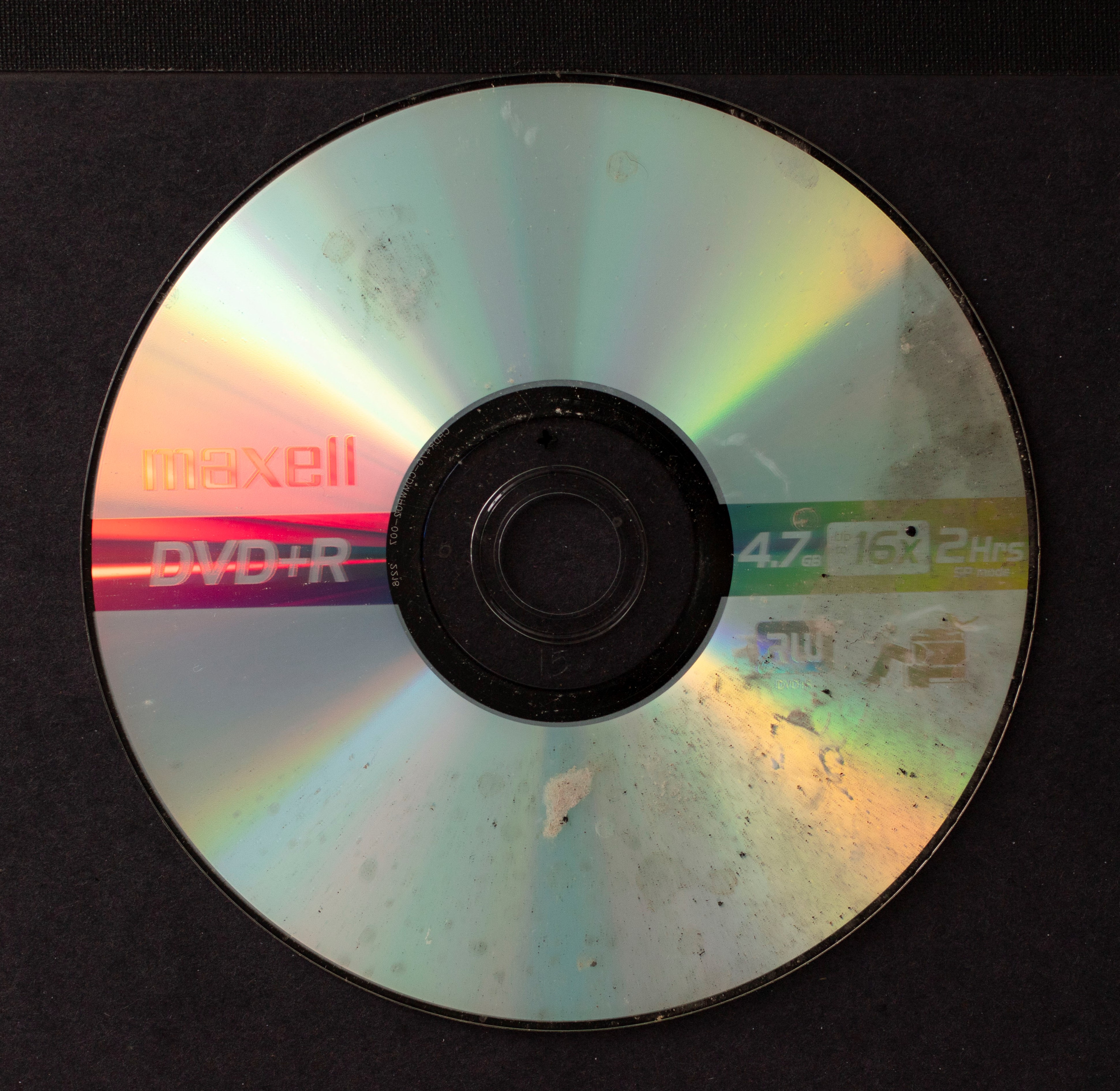As senior conservator Nora Lockshin mentioned in a previous blog post, the Archives conservation team had the opportunity to burn a few optical discs (CDs and DVDs) during a mock fire disaster recovery exercise in collaboration with the Smithsonian PRICE team and the Bureau of Alcohol, Tobacco, Firearms, and Explosives’ Fire Research Laboratory. This burn provided an excellent opportunity to research and practice treatment strategies for severely damaged optical discs. We stored data onto the disks before the burn, which we would attempt to access after treatment.
We placed 30 spare discs in the burn site and each had varying storage conditions and surface effects:
- 12 were in an archival storage box with a lid:
- 6 were in jewel cases (plastic CD/DVD cases)
- 6 were in Tyvek sleeves
- 18 were in a cardboard box with no lid:
- 6 were in jewel cases
- 6 were in Tyvek sleeves
- 6 were completely exposed
All discs had ink and graphite marks and 15 had labels. We wanted to see how these different variables would be affected by the burn. You can read about the mock fire exercise and watch a video of it on Nora’s post.
The archival storage box did a fantastic job of protecting the 12 discs inside of it. The more interesting changes were in the 18 damaged discs that were in the box with no lid (in the lower half of Figure 2).
After taking some before-treatment photographs (I discussed the photography process in another blog post), I proceeded to do condition assessments of the discs. This process involved creating a condition documentation sheet, some of which you can see below.
The two biggest problems on these more exposed discs were soot accumulation and the presence of water spots. These surface effects can interfere with a computer’s ability to read the information on the disc and could damage the disc drive if inserted. Some of the labels exhibited a small amount of bubbling which could potentially interfere with the balance of the disc when being read by a computer, but the bubbling was so minimal that we determined it was negligible and confirmed this at the end of the experiment.

Having noted the conditions of the discs, I could then move on to doing some cleaning tests. We were able to find another set of spare discs to practice on before cleaning those from the fire exercise. Nora made some soot by burning wax candles and collected the it on a glass dish. While wearing gloves, I rubbed my fingers into the soot collected on the glass dish. I then rubbed my soot-covered finger onto the discs which resulted in a successful transfer. This process made the discs dirty so we could test different cleaning methods on them.
Before testing, I read some of the literature on cleaning fire damaged discs and found a few publications, most of which were published 10 to 20 years ago. Many of them suggested the use of Kimwipes, distilled (filtered) water, and alcohol for cleaning. We wanted to test other tools to see if they would also be helpful. We first tested things like make-up sponges(a common staple of conservation), a Japanese brush (hake brush) with really soft hairs, PEC-PAD wipes, cotton swabs, a soot sponge, and many others. In this round of tests, I was looking for tools that would not leave scratches on the discs. Computers use lasers to read the information from the discs and scratches on the disc can block the laser or bend its light in unhelpful ways, which makes it difficult for the computer to read the information (see an explanation of this on the Canadian Conservation Institute website) Every tool scratched the discs, but the four tools that seems to do the least amount of scratching were the Japanese brush, Kimwipes, PEC-PAD wipes, and cotton swabs, all ofwhich would make it into the next round of cleaning tests. Despite greatly scratching the discs, the soot sponge also made it to the second round because it seemed to work well in removing soot from labels. Having narrowed my tools, I was ready to start experimenting with solvents.
Tune in next month for part two.
Related Resources
- "Return of…the Beast" by Nora Lockshin, The Bigger Picture, Smithsonian Institution Archives
- Longevity of Recordable CDs, DVDs and Blu-rays — Canadian Conservation Institute (CCI) Notes 19/1 by Joe Irachi, Canadian Conservation Institute
- "Glaring Discs: Photographic Condition Documentation of Reflective Surfaces" by Miguel Resendiz, The Bigger Picture, Smithsonian Institution Archives
Produced by the Smithsonian Institution Archives. For copyright questions, please see the Terms of Use.


Leave a Comment